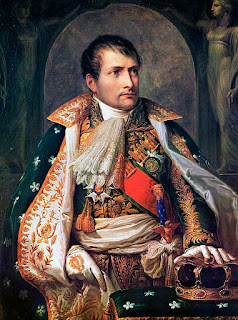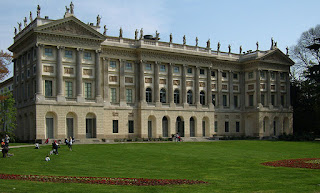The master of the fresco technique became court painter to Napoleon
 |
| Appiani fell into poverty at the end of his life despite his notable career |
He is remembered for his fine portraits of some of the famous people of the period, including Napoleon, the Empress Joséphine, and the poet, Ugo Foscolo. He is also well regarded for his religious and classical frescoes.
Born in Milan in 1754, Appiani was intended for a career in medicine, to follow in his father’s footsteps, but he went into the private academy of the painter Carlo Maria Guidici instead, where he received instruction in drawing and copying from sculpture and paintings.
He then joined the class of the fresco painter Antonio de Giorgi at the Ambrosiana picture gallery in Milan and he spent time in the studio of Martin Knoller where he learnt more about painting in oils.
Appiani also studied anatomy at the Ospedale Maggiore in Milan with the sculptor Gaetano Monti and travelled to Rome, Parma, Bologna, Florence and Naples to further his studies.
He became interested in aesthetic issues, inspired by the classical poet Giuseppe Parini, who was the subject of two fine pencil portraits by him.
 |
| Appiani's magnificent portrait of Napoleon Bonaparte, painted in 1805 |
He is also remembered for his frescoes in the Royal Villa - Villa Reale - of Milan and his frescoes honouring Napoleon in some of the rooms of the Royal Palace of Milan.
Appiani was created a pensioned artist to the Kingdom of Italy by Napoleon, but lost his allowance after the fall of the kingdom in 1814, and he later fell into poverty. He suffered a stroke and died at the age of 63 in the city of his birth.
He is sometimes referred to as Andrea Appiani the Elder, to distinguish him from his great nephew, Andrea Appiani, who was an historical painter in Rome.
Appiani’s portrait of the poet Foscolo, a revolutionary who supported Napoleon’s attempts to expel the Austrians from Italy, hangs in the Pinacoteca di Brera, his 1805 portrait of Napoleon is in the Kunsthistorisches Museum in Vienna, while that of the Empress Joséphine hangs at the Château de Malmaison, her former home in Paris and and Napoleon's last residence in France.
The Pinocoteca di Brera is also home to the self-portrait of Appiani shown here.
Travel tip:
The Brera Academy of Fine Arts in Milan is
one of Italy's most prestigious art schools
The Accademia di Belle Arti di Brera, sometimes shortened to Accademia di Brera, where Andrea Appiani studied, is now a state-run tertiary public academy of fine arts in Via Brera in Milan, in a building it shares with the Pinacoteca di Brera, Milan's main public museum for art. The academy was founded in 1776 by Maria Theresa of Austria and shared its premises with other cultural and scientific institutions. The main building, the Palazzo Brera, was built in about 1615 to designs by Francesco Maria Richini. The Brera district is so named because in around the ninth century, for military purposes, it was turned into a ‘brayda’ – a Lombardic word meaning ‘an area cleared of trees’. Today, it is one of Milan’s most fashionable neighbourhoods, its narrow streets lined with trendy bars and restaurants. As the traditional home of many artists and writers, the area has a Bohemian feel that has brought comparisons with Montmartre in Paris.
Travel tip:
The Villa Reale, which faces the Giardini Pubblici
of Porta Venezia, contains notable Appiani frescoes
Milan’s Villa Reale, which at times has been known as the Villa Belgiojoso Bonaparte and the Villa Comunale,was built between 1790 and 1796 as the residence of Count Ludovico Barbiano di Belgiojoso, an Austrian diplomat and soldier who served the Habsburg monarchy in the second half of the 18th century. The mediaeval castle of Belgioioso, a town around 40km (25 miles) south of Milan in the province of Pavia, had been the seat of the Belgiojoso family for centuries. His villa, built in Neoclassical style and designed by Leopoldo Pollack, an Austrian-born architect, is on Via Palestro, facing the Giardini Pubblici of Porta Venezia, the eastern gate of the city. In 1920 the villa became the property of the city of Milan and a year later became the home of the Galleria d'Arte Moderna. Adjoining the main building is the Padiglione d'Arte Contemporanea, an exhibition space for contemporary art, which was built in 1955 on the site of the former stables of the palace, destroyed by wartime bombing. The villa’s English-style gardens were also laid out by Leopoldo Pollack.
Also on this day:
1830: The death of Francis I of the Two Sicilies
1931: The birth of film director Paolo Taviani
1936: The birth of actress Virna Lisi
1942: The birth of footballer Sandro Mazzola
1979: The birth of child actor Salvatore Cascio
1982: The birth of golfer Francesco Molinari
No comments:
Post a Comment